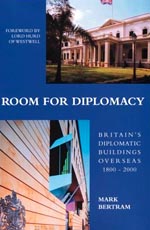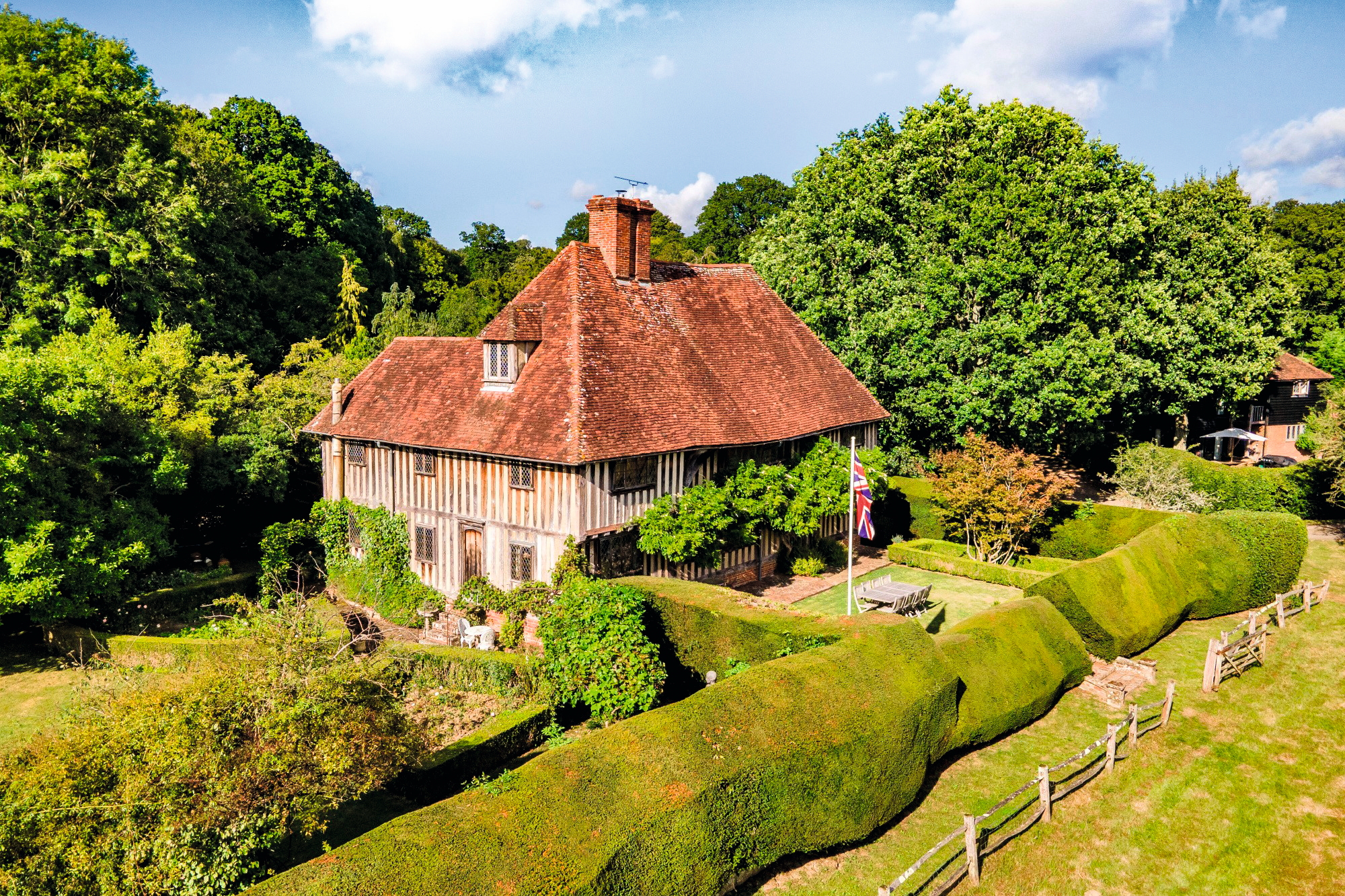Book review: Room for Diplomacy: Britain’s Diplomatic Buildings 1800-2000
Gavin Stamp welcomes a much-overdue look at British embassies abroad, how they were built and who they were built by


To order any of the books reviewed or any other book in print, at
discount prices* and with free p&p to UK addresses, telephone the Country Life Bookshop on Bookshop 0843 060 0023. Or send a cheque/postal order to the Country Life Bookshop, PO Box 60, Helston TR13 0TP * See individual reviews for CL Bookshop price
History/Architecture Room for Diplomacy: Britain's Diplomatic Buildings Overseas 1800-2000 Mark Bertram (Spire Books, £45, *£42.75)
This is a book we have long been waiting for. The UK has an astonishing variety of buildings in foreign and Commonwealth countries the ‘overseas estate'-some old and historically fascinating, and many specially commissioned, but it has always been difficult to find out anything about them -until now. This book is a comprehensive architectural history of Britain's embassies, chanceries and legations abroad, and has the huge merit of explaining the workings of the diplomatic service, the precise role of ambassadors, consuls and so on. The author, Mark Bertram, is well equipped to do this, being an architect who has worked for the former Ministry of Public Building and Works and for the Foreign and Commonwealth Office.
The story is as much political as architectural, chiefly the long running battle between the Office of Works, responsible for maintaining, repairing and building embassies, and the Treasury, always determined to economise even at the expense of national prestige. Indeed, as the author notes, it is surprising that there was hardly any debate in the 19th century about the role of architecture in creating a working symbol of British identity and power. Once, embassies abroad were maintained by aristocrats, who leased a suitably grand house and paid for the whole operation themselves.
The tradition was maintained in part by the Duke of Wellington when, in 1814, he persuaded the government to purchase Pauline Borghese's hôtel particulier in Paris. This remains our grandest embassy and it is cheering that it's still in use, as are our 19th-century ones in Cairo and Vienna (the second grandest, the Thun palace in Prague, was acquired in 1926).
Curiously, our first purpose-built embassy was in Constantinople, begun by Lord Elgin (he of the Marbles) in 1802. After the building was destroyed by fire, it was rebuilt in the 1840s as a much grander palazzo, reminiscent of the Reform Club by the architect W. J. Smith. Despite another fire, and a terrorist bomb in 2003, this splendid building remains our consulate in Istanbul. Other remarkable embassies include the one in Kabul, designed by Basil Sullivan in 1924-27, which Lord Curzon wanted to be the finest house in Asia (and which we foolishly gave to Pakistan in the 1990s).
Sign up for the Country Life Newsletter
Exquisite houses, the beauty of Nature, and how to get the most from your life, straight to your inbox.
A few embassies were designed by distinguished outside architects, notably Washington by Edwin Lutyens and the Rome chancery by Basil Spence (the author also recounts the fiasco of unbuilt Brasilia and the self-obsessed Smithsons, who would complain that ‘Michelangelo was never so messed up by his Pope'). Most were done in-house by the Office of Works. Some in the early 20th century were very good, such as those by Thrift Reavell (a new name to me) in Sofia and Belgrade, and the embassy in Stockholm by Richard Allison-although the ambassador complained that ‘he only calculated for dinner parties of sixteen, a sadly bourgeois conception of the requirements of a Stockholm dining-room'.
The last embassy built in the tradition of noblemen's palaces was in Rio de Janiero, ‘perhaps the largest white elephant in the history of the British diplomatic estate', completed just before the capital moved to Brasilia. After that came a bleak period when the reality of Britain's declining power resulted in feeble and mediocre attempts at modernity. As Lord Carrington remarked of one such, in Canberra, ‘the interior looked like a bad parody of a tourist-class lounge in a P&O liner'. Since then, some good modern embassies have been built, notably that in Berlin by Michael Wilford. Today, the insistent need for economy leads to demands for our larger and older embassies to be replaced by ones more in keeping with Britain's post-imperial status. But, if we are still to have some influence in the world, dignified and civilised architecture surely still has a role to play. One complaint: this admirable book needs many more illustrations.
Country Life is unlike any other magazine: the only glossy weekly on the newsstand and the only magazine that has been guest-edited by HRH The King not once, but twice. It is a celebration of modern rural life and all its diverse joys and pleasures — that was first published in Queen Victoria's Diamond Jubilee year. Our eclectic mixture of witty and informative content — from the most up-to-date property news and commentary and a coveted glimpse inside some of the UK's best houses and gardens, to gardening, the arts and interior design, written by experts in their field — still cannot be found in print or online, anywhere else.
-
 A mini estate in Kent that's so lovely it once featured in Simon Schama's 'History of Britain'
A mini estate in Kent that's so lovely it once featured in Simon Schama's 'History of Britain'The Paper Mill estate is a picture-postcard in the Garden of England.
By Penny Churchill
-
 Splash! A Century of Swimming and Style: A whistle-stop history, from the Roman Baths to Hampstead Heath
Splash! A Century of Swimming and Style: A whistle-stop history, from the Roman Baths to Hampstead HeathEmma Hughes dives into swimming's hidden depths at the Design Museum's exhibit in London.
By Emma Hughes